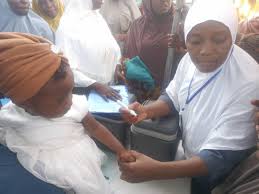
Nigeria’s Total Fertility Rate (TFR) has declined from 5.3 children per woman in 2018 to 4.8 in 2024, indicating a significant demographic shift and gradual progress in reproductive health and family planning over the past five years.
This was revealed in the 2024 Nigeria Demographic and Health Survey (NDHS) Report, launched on Friday in Abuja by the Minister of State for Health and Social Welfare, Dr. Iziaq Salako.
Salako said the decline reflects incremental gains in access to, and utilisation of, family planning services nationwide.
“Modern contraceptive use among currently married women increased modestly to 15 per cent in 2023 from 12 per cent in 2018, while satisfied demand for family planning rose to 37 per cent,” he noted.
While acknowledging these improvements, the minister stressed that progress remains below the level needed to drive broad social and economic transformation.
According to the report, antenatal coverage currently stands at 63 per cent, skilled birth attendance at 46 per cent, while postnatal coverage within two days after delivery improved from 38 per cent in 2018 to 42 per cent in 2024.
On child survival indicators, Salako said the under-five mortality rate dropped from 132 deaths per 1,000 live births in 2018 to 110 per 1,000 in 2024, while neonatal mortality remained nearly unchanged, rising slightly from 39 to 41 per 1,000 live births within the same period.
“More efforts are required to reduce neonatal deaths, which account for about 40 to 45 per cent of under-five mortality,” he said.
The minister added that the findings underscore the need for coordinated, data-driven policy responses to strengthen maternal and child health outcomes across the country.
He noted that the Federal Ministry of Health has begun integrating the report’s findings into ongoing reforms, including the Maternal and Maternal Fatality Reduction Initiative and the Nigerian Child Survivor Act (2023–2025), both aimed at tackling context-specific challenges through targeted interventions.

